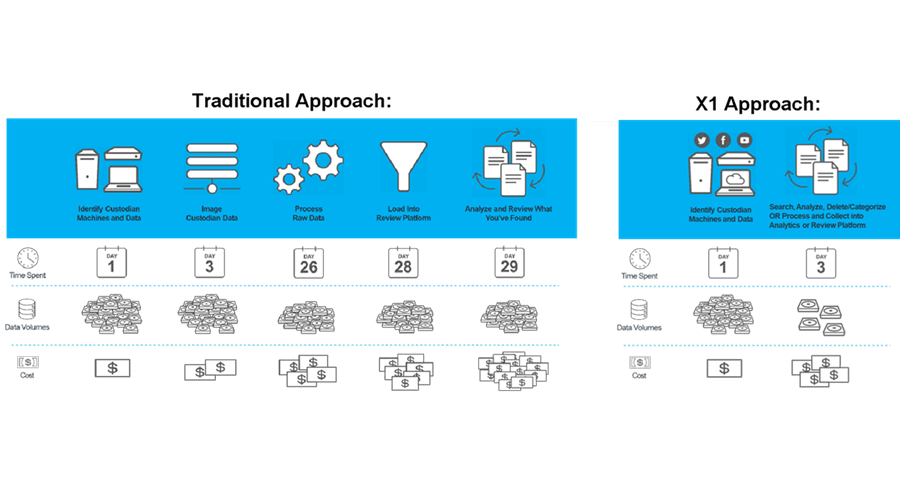eDiscovery can be a very expensive process and time consuming when traditional methods are employed. With legacy processes, from the time ESI collection starts, it often takes weeks for the data to finally end up in review. Time is money, and this dramatically increases costs as well as risk.
ESI processing is a dedicated and often expensive step in the EDRM workflow. The majority of ESI processing consists of data culling and filtering, deduplication, text extraction, metadata preservation, and then staging the data for upload into a review platform, often in the form of a load (DAT) file. Using ESI processing methods that involve on-premise hardware appliances that are not integrated with the collection process and do not integrate with review platforms like Relativity significantly increase cost and time delays. This means practitioners have to spend the often several weeks that are required by other cumbersome solutions through manual collections and multiple hand-offs.
However, the latest in collection technologies will now combine targeted collection with these processing steps that are performed “on the fly” and in the background so that the data is automatically collected, processed and uploaded into a review platform such as Relativity in one fell swoop.
The graphic below is an illustration contrasting the challenges associated with traditional eDiscovery processes, with the far more efficient new paradigm. When you engage in manual collection, and then manual on-premise hardware-based processing, and finally manual upload to review, you’re extending the process by often weeks, you are a dramatically increasing cost and risk with many manual data handoffs.

Providing a contrast to traditional methods, a recent Relativity webinar featured the integration of the X1 Distributed Discovery platform with its RelativityOne Collect solution. A live demonstration performed by Relativity Product Manager Greg Evans highlighted in real time how the integration dramatically improves the enterprise eDiscovery process by enabling a targeted and efficient search and collection process, with full and integrated ESI processing. Within minutes, data collected from endpoints with X1 is populated straight into a Relativity workspace, fully processed and ready for review, without any human interaction once the collection is started.
So in terms of the big picture, this X1/Relativity integration not only streamlines enterprise ESI collection, but it relegates ESI processing to a completely automated background function as an afterthought. That’s what disruption looks like.
A recording of the X1/Relativity integration webinar can be accessed here.
